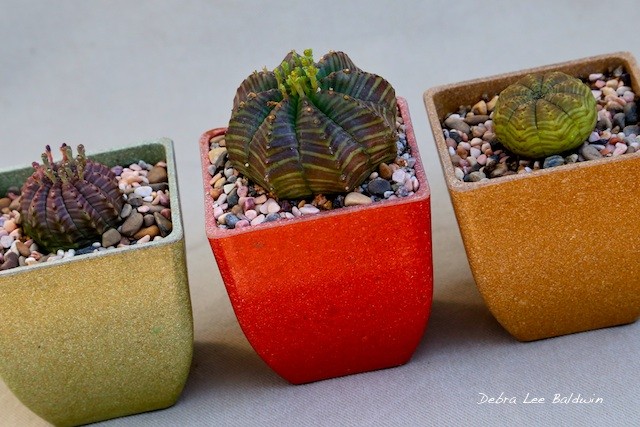
Spherical succulent euphorbias in green, red and tan pots.
I was pairing some newly acquired succulents with containers I had kicking around, and discovered that one plant in particular, Euphorbia meloformis, looks great in just about anything. It’s symmetry, ridges, stripes and red-green-brown hues make it the Naomi Campbell of succulents. Similar to spherical Euphorbia obesa (baseball plant), Euphorbia meloformis is whimsical, visually appealing, easy to grow, not spiny, and highly collectible.
These photos show it modeling a variety of containers, in styles ranging from casual to elegant. Which do you like best?
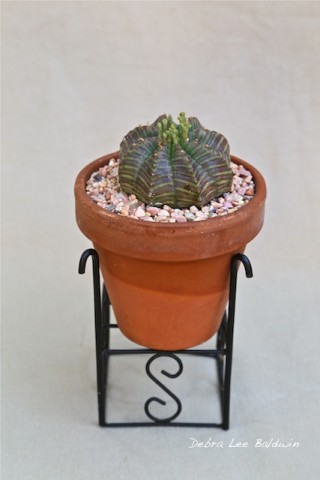
Simple terracotta pot with stand.
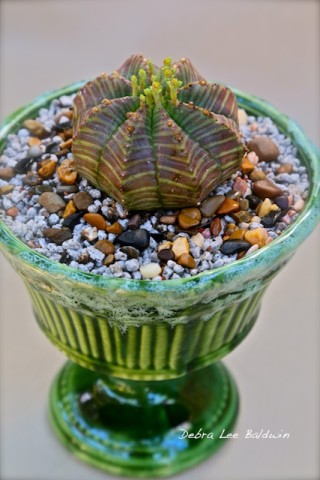
Retro ’40s pot with green glaze.
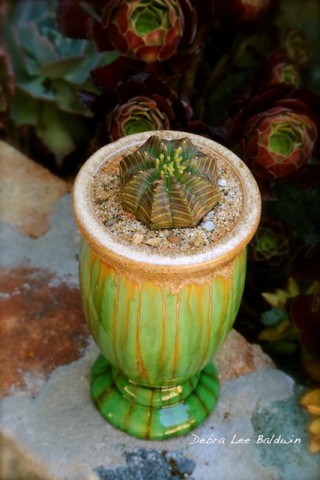
Vase-shaped green, tan and yellow glazed pot.
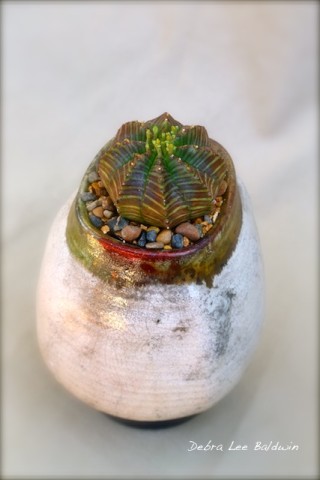
Raku pot with iridescent gold, red and white glazes.

Organic free-form pot with design of overlapping leaves.
Clearly, my “fashion model” metaphor falters when you consider the plant’s rotund form. However, such plumpness is an important clue when it comes to care.
Succulent euphorbias come from South Africa and are used to heat and dryness. They’re filled with stored moisture that enables them to survive months without rainfall. Consequently, the roots don’t know what to do with excess amounts. Leave a rotund euphorbia out in the rain, especially during its winter dormancy, and several days later it may collapse into a squishy mess. Rot that began in waterlogged roots can travel upward into the body of the plant—not a pretty sight. (Sadly, I speak from experience.)
The fatter the succulent—and this applies to cacti as well—the more water it stores and the less it needs. Water plump succulents once a month, spring through summer, and not at all in winter. Give plenty of sun to bring out their colors and encourage growth, but not so much that they’re irreparably scorched (protect from intense heat and sun, especially on summer afternoons). Grow in a coarse, fast-draining potting medium. I use a mix of 25% potting soil, 25% decomposed granite (or some other coarse-grained, gritty sand) and 50% pumice (a crushed volcanic rock that absorbs excess water). Fertilizing isn’t necessary. Protect from frost. Avoid abrading the plant’s surface lest it ooze a milky latex that can cause an allergic reaction.
Doubtless you’ll find, as I have, that succulent euphorbias are super easy to grow, look great in a wide variety of containers, and—unlike most fashion models or the rest of us, for that matter—get even better looking as they age.
